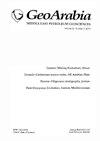利用方位相干属性成像细微断层:以沙特阿拉伯中部为例
引用次数: 1
摘要
相干属性是一种广泛应用于三维地震时间片断层解释的边缘检测方法。传统的相干属性是使用所有可用方位角的迹线在迁移的体积上计算的。最近的研究表明,沿特定方位角计算相干性可以增强对垂直于这些方位角的故障的检测。在这项研究中,我们对沙特阿拉伯中部气田的三维地震数据集进行了方位角相干属性分析。除了传统的全方位角体外,我们还生成了四个按方位角排序的迁移三维数据体。然后,我们计算了所有体的相干属性,并将每个方位角相干体与常规的全方位角相干体进行了比较。对于走向垂直于分选方位角的断层,其方位相干性得到了改进的定义。更具体地说,北西向不连续系统在北东-西南向相干体中的成像比在全方位相干体中的成像更清晰。这种增强的原因是,当地震波平行于断层走向传播时,它们往往避免穿过断层,因此错过了断层的影响,而当它们垂直于断层走向传播时,它们必须穿过断层,从而更好地照亮断层。本文章由计算机程序翻译,如有差异,请以英文原文为准。
Imaging subtle faults using azimuthal coherence attribute: A case study from Central Saudi Arabia
The coherence attribute is an edge detection method that is widely used for interpreting faults on 3-D seismic time slices. The traditional coherence attribute is calculated on migrated volumes using traces from all available azimuths. It has recently been shown that calculating coherence along specific azimuths can enhance the detection of faults running perpendicular to those azimuths. In this study, we applied azimuthal coherence attribute analysis on a 3-D seismic data set from a gas field in Central Saudi Arabia. We generated four migrated 3-D data volumes sorted by azimuth in addition to a conventional full-azimuth volume. We then calculated the coherence attribute for all volumes and compared each azimuthal coherence volume to the conventional full-azimuth coherence volume. The azimuthal coherence results exhibited an improved definition for faults whose strikes are perpendicular to the sorting azimuth. More specifically, systems of NW-trending discontinuities were imaged more clearly in the NE-SW oriented coherence volume than it was in the full-azimuth coherence volume. The reason for this enhancement is the fact that seismic waves tend to avoid passing through the fault when they propagate parallel to the fault strike therefore missing the effects of the fault while they must pass through the fault when propagating perpendicular to the fault strike which results in better illumination of the fault.
求助全文
通过发布文献求助,成功后即可免费获取论文全文。
去求助
来源期刊

Geoarabia
地学-地球科学综合
自引率
0.00%
发文量
0
审稿时长
>12 weeks
期刊介绍:
Cessation. Published from 1996 to 2015, GeoArabia, The Journal of the Middle Eastern Geosciences was a quarterly journal covering the petroleum geosciences in the Middle East. The journal covers subjects such as: - sedimentology - tectonics - geophysics - petroleum reservoir characterization
 求助内容:
求助内容: 应助结果提醒方式:
应助结果提醒方式:


